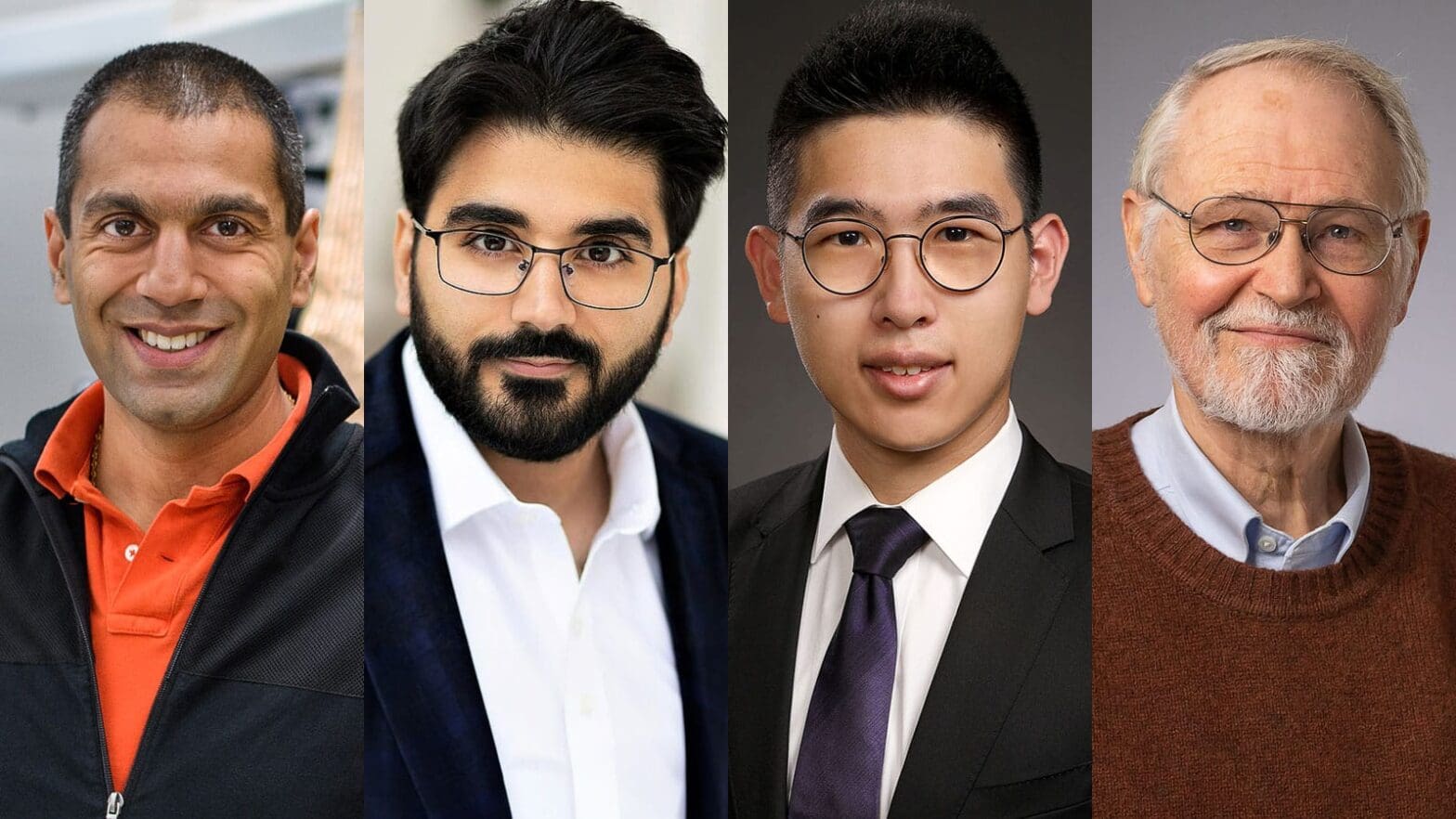
NJ R&D Council honors pioneering contributions by Princeton researchers
By
on
Brian Kernighan won the Science & Technology Medal, the R&D Council’s highest honor, for his work on computer programming languages. Naveen Verma, Hongyang Jia and Hossein Valavi won an Edison Patent Award for their work on advanced computer hardware.
“From the inventions of the lightbulb to transistors to antibiotics, New Jersey has been — and continues to be — in the forefront of life-altering innovations,” said Colleen Ruegger, chair of the R&D Council Board of Directors and an executive at Novartis.
Brian Kernighan
Kernighan, the William O. Baker *39 Professor in Computer Science, was recognized for his groundbreaking work on computer programming languages, particularly his role in developing C, one of the most widely used and influential programming languages in the computing industry. The medal is given annually to a New Jersey leader for extraordinary performance in bringing an impactful innovation to the marketplace.
Broadly, Kernighan’s work focuses on programming, software tools, application-oriented languages and technology education. He is the author of a series of books that have become known for their clarity and precision. Among them is “The C Programming Language” (Prentice Hall, 1978), co-written with Dennis Ritchie. The book, which is still in print, is known among programmers as “K&R” and is the fundamental text on the language. Kernighan has also written books on the Go and AWK programming languages.
After completing a Ph.D. in electrical engineering at Princeton and working for 30 years at AT&T Bell Laboratories, Kernighan joined the Princeton faculty in 2000. He has served as a director of undergraduate studies in the department since 2001. He is a member of the American Academy of Arts and Sciences and the National Academy of Engineering, as well as a recipient of the USENIX Association Lifetime Achievement Award.
Naveen Verma, Hongyang Jia, Hossein Valavi
Led by Verma, a professor of electrical and computer engineering and director of the Keller Center for Innovation in Engineering Education, the team reimagined computer chips to run powerful AI systems using much less energy than today’s most advanced semiconductors. This allows systems made with the Princeton technology to run AI programs directly on mobile hardware, rather than communicating over the cloud, enabling applications such as piloting software for drones or AI assistants that keep information securely on local devices.
Jia and Valavi were graduate students studying with Verma when they began working on the chip designs, which enable memory cells to perform complex computations without shuttling data back and forth to a central processor. Jia is now an assistant professor of electronic engineering at Tsinghua University in Beijing. Valavi is a lecturer in electrical and computer engineering at Princeton, with a continued research focus on the intersection of machine learning and efficient hardware design.
Earlier this year, Verma and his team partnered with the U.S. Defense Department’s largest research organization to investigate how the new hardware could be used in a range of mobile and space-based applications. EnCharge AI, a company co-founded by Verma in 2022, plans to release its first commercial chips, manufactured by TSMC, next year.
This year, 14 patents created by 66 inventors and five individual award winners will be honored during the 45th annual Edison Patent Award Ceremony and Reception on November 21 at Bell Works in Holmdel, NJ.









